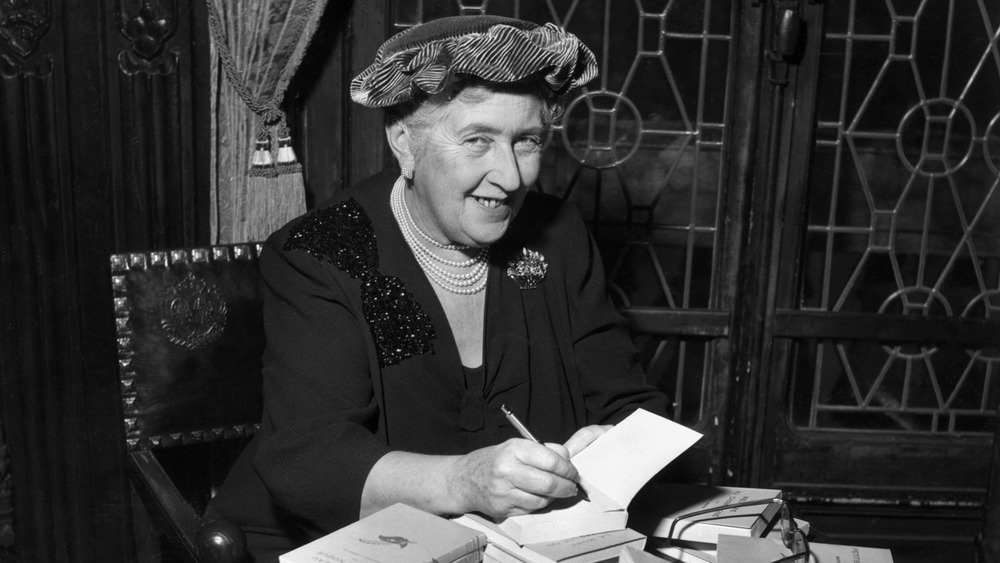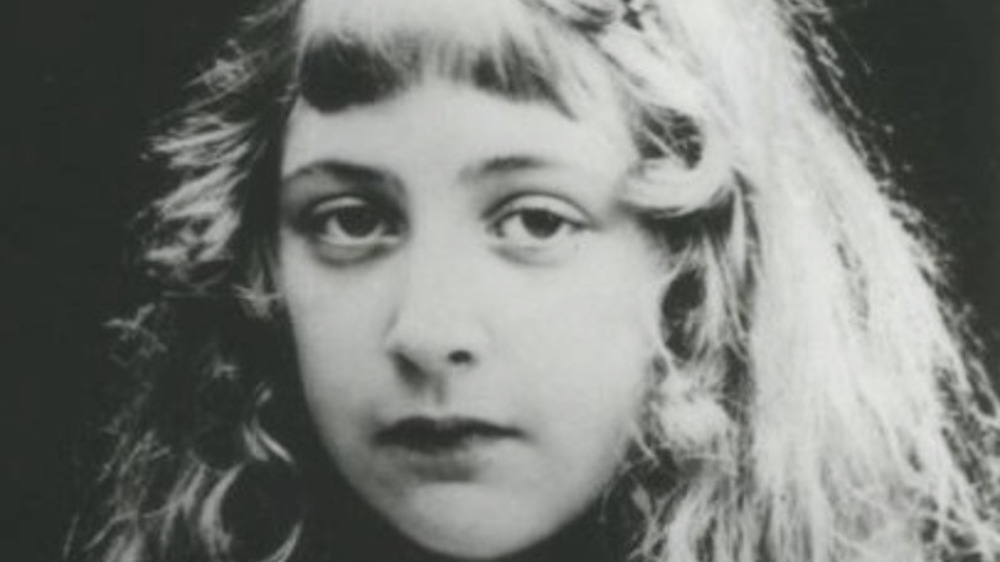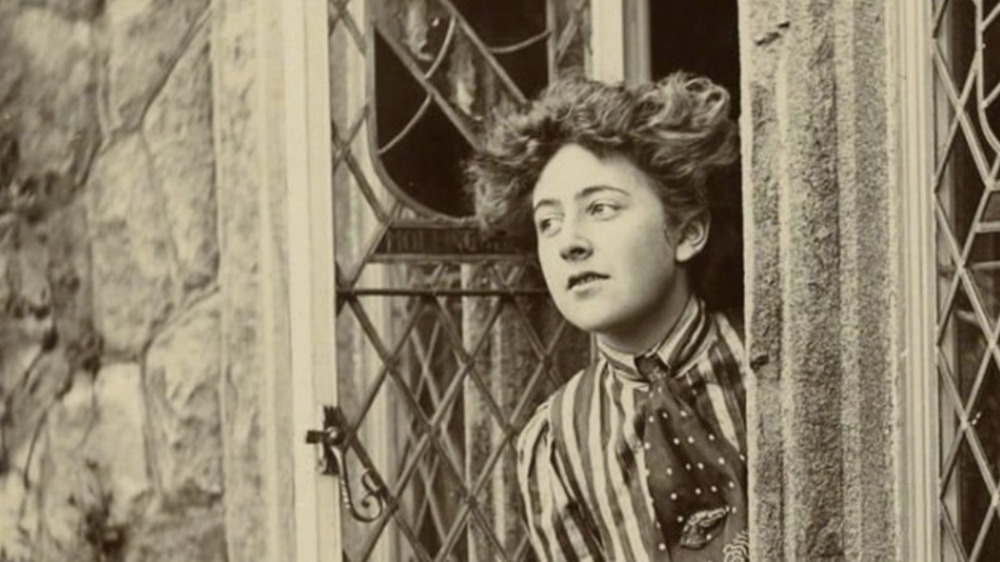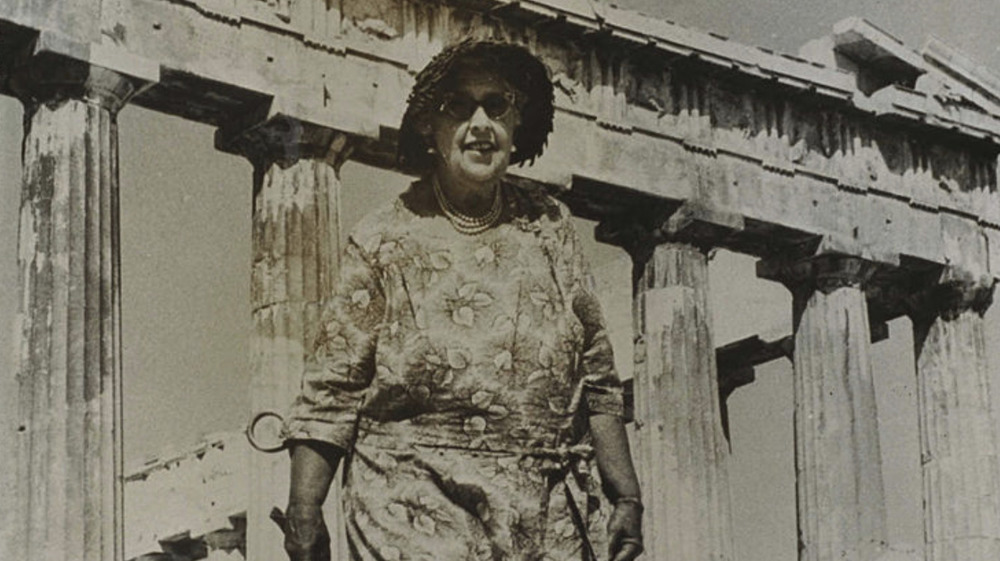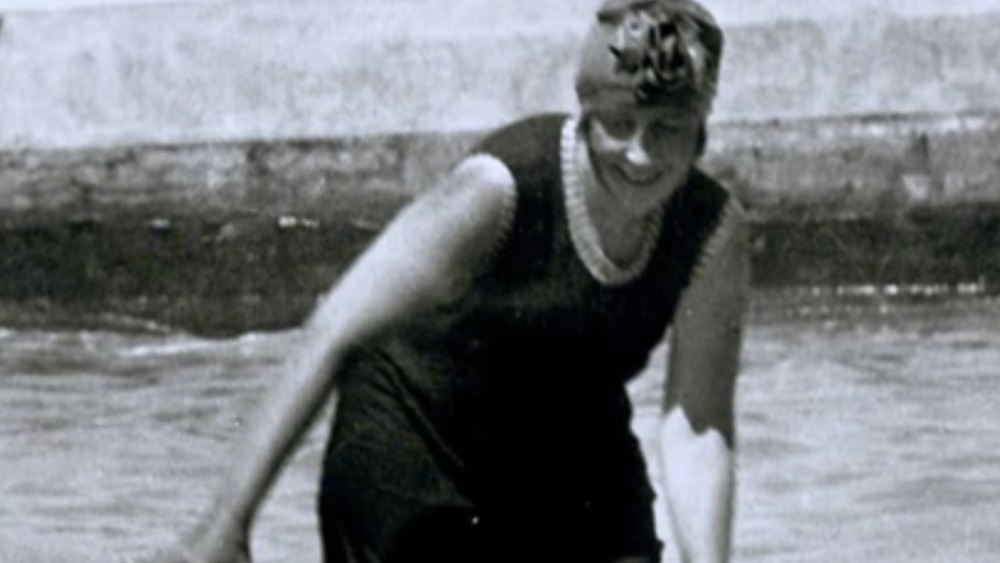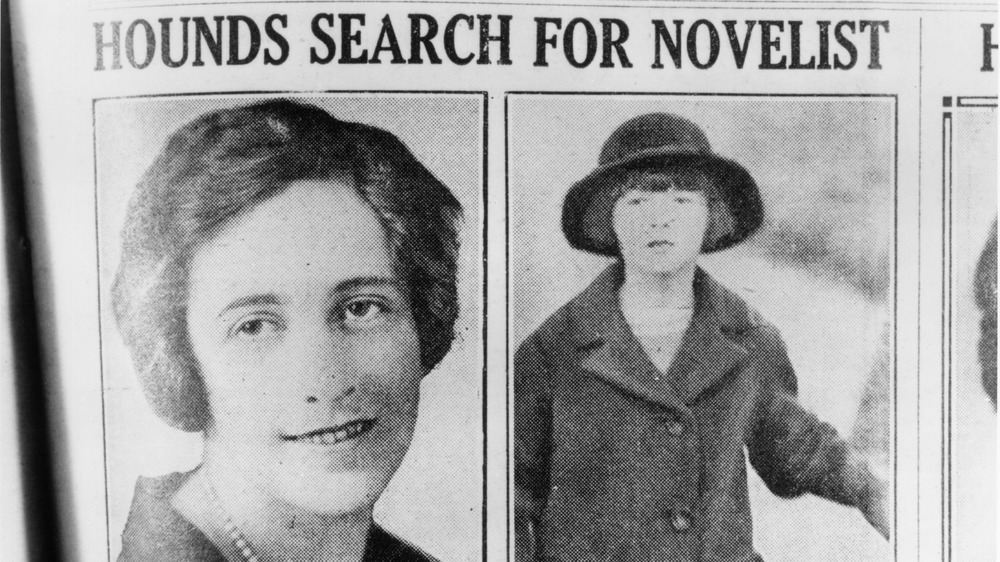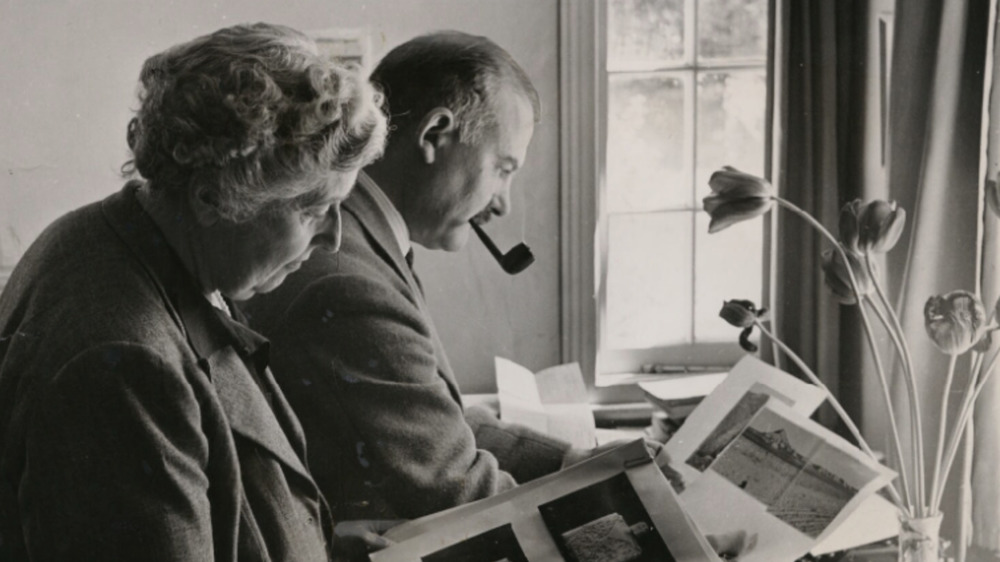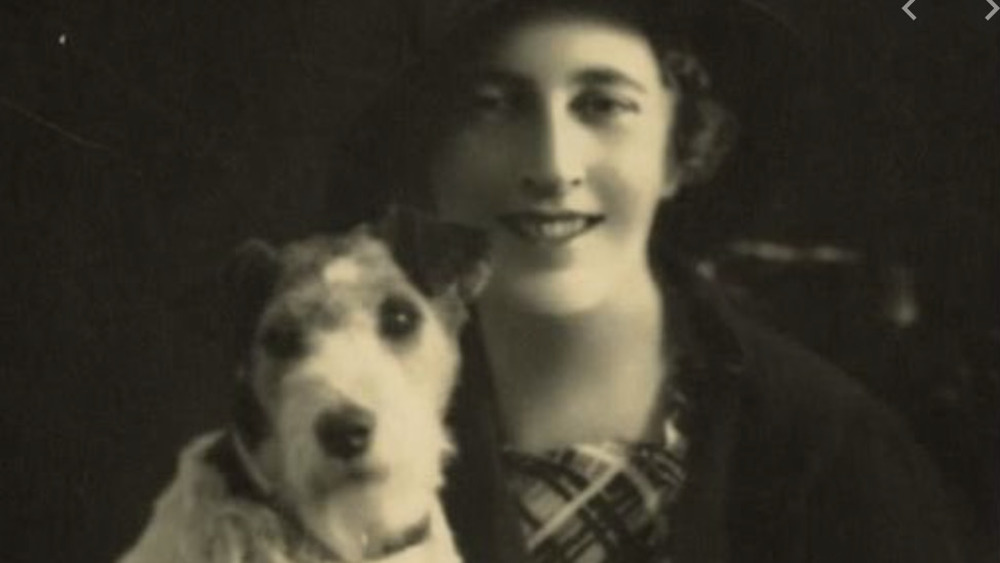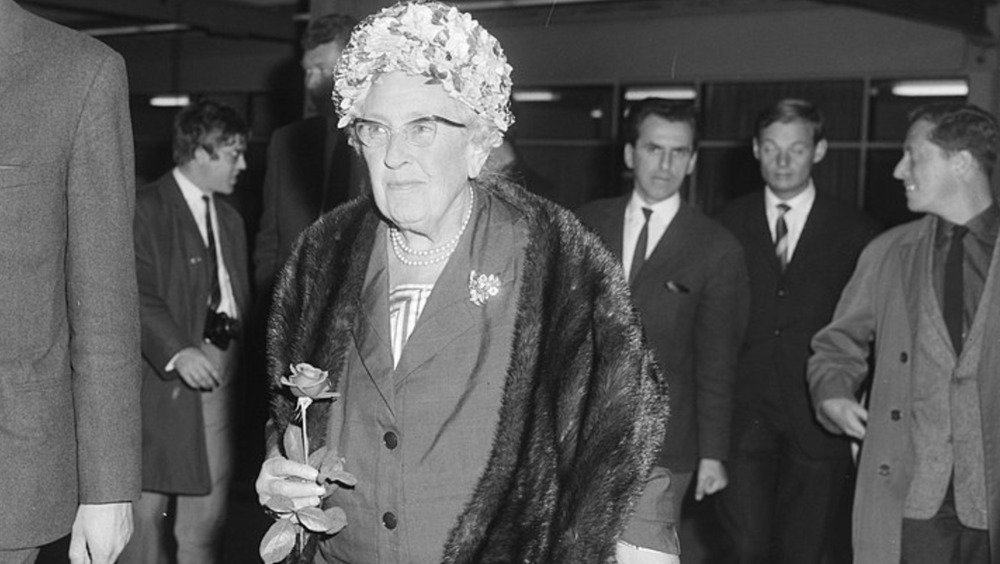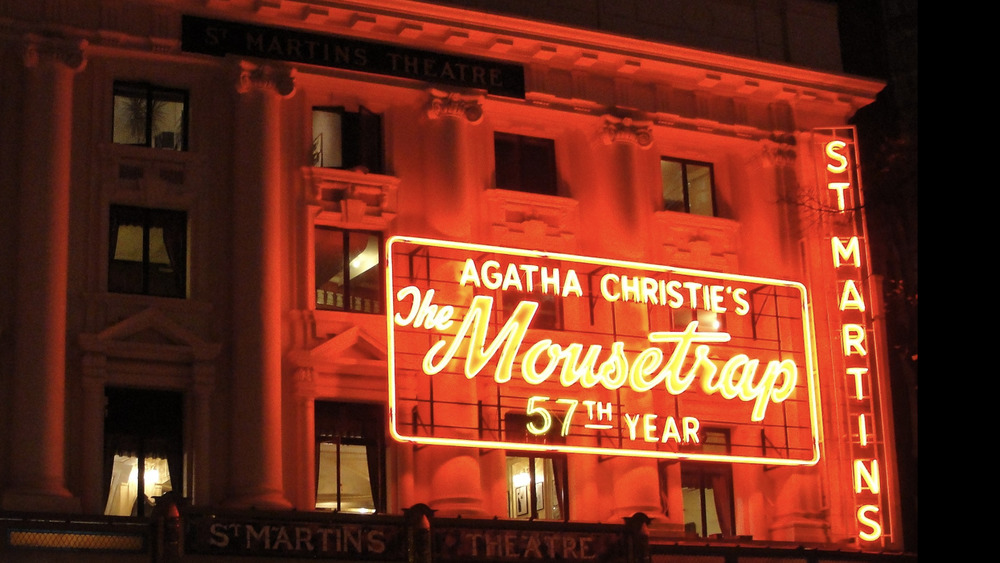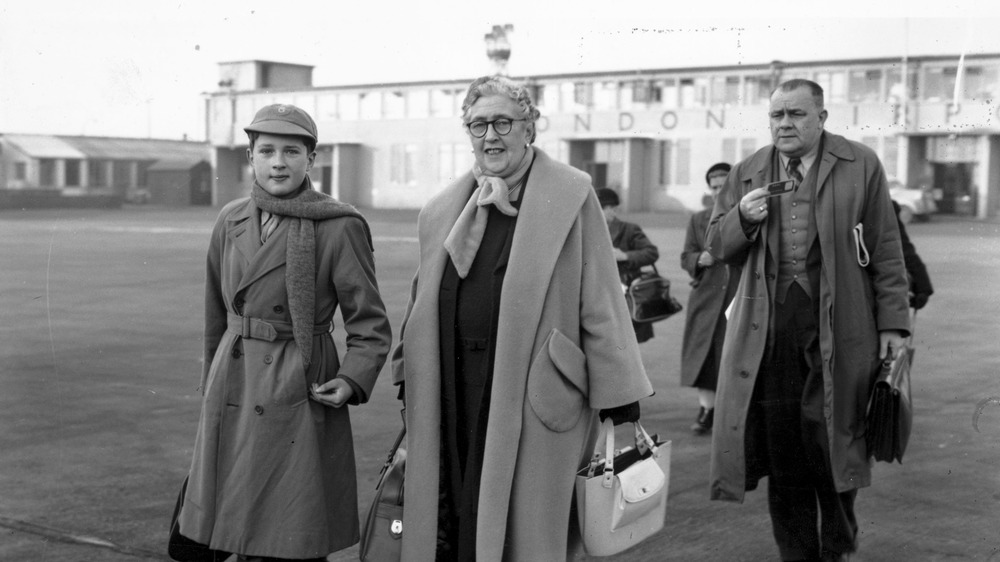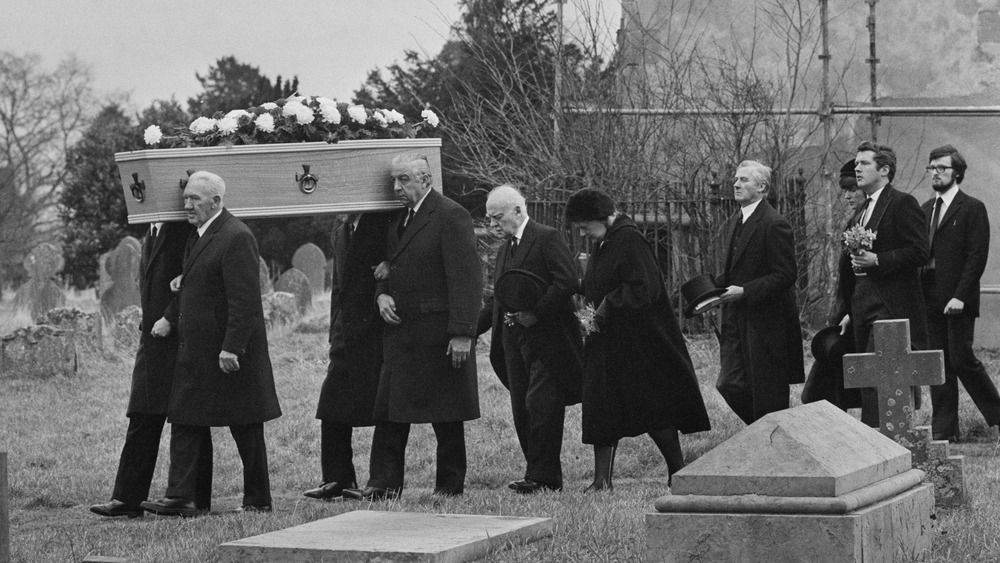The Untold Truth Of Agatha Christie
Born in Torquay, England, in 1890, Agatha Christie is a best-selling novelist of all time, and perhaps one of the most prolific. Over the course of her literary career, she published 66 crime novels and numerous plays and short stories, which have been translated in over 100 languages. According to Lithub, Christie sold over a billion copies in the English language alone, surpassed only by the Bible and William Shakespeare. She is the creator of Hercule Poirot and Miss Marple, some of the most memorable sleuths in literature, and author of crime classics such as Murder on the Orient Express and And Then There Were None.
Yet Christie remains an enigmatic figure who keeps baffling her biographers. She married twice and had an adventurous, sometimes difficult life. She had a professional knowledge of poisons. Once she mysteriously vanished for nine days without explanation. During World War II, British intelligence suspected she was a spy. She loved to travel, brought her typewriter on the Orient Express, and knew how to surf. Here is the untold truth of the queen of detective fiction.
Agatha Christie taught herself to read and write
Born in Torquay in 1890, Agatha Miller was raised in a middle-class family. Her father was an American stockbroker, her mother the daughter of a British Army officer. As a young girl at the time, she was not entitled to receive an education. Clara, Agatha's mother, didn't want to send her daughter to school, so Agatha, with the help of her governess, taught herself to read and write by the age of 5. According to her biography on her website, she spent her time reading in her family's country house, where she was mostly alone. She was fond of children's stories, but she also liked to read poetry and American thrillers. "Spending most of her time with imaginary friends, Agatha Clarissa Miller's unconventional childhood fostered an extraordinary imagination," per Agatha Christie.
In 1901, when Agatha was 11 years old, her father died of a heart attack. It was a painful loss for Agatha and her mother, already burdened by financial difficulties. But Agatha managed to continue pursuing her education. She took singing and piano lessons, and at the age of 16, she was sent to a boarding school in Paris to finish her studies. Although Agatha claimed she had no intention of becoming a writer (originally she wanted to be a pianist but was too shy, according to her official biography on her website), by this time she already had several poems published and was already writing short stories.
Agatha Christie's first novel was rejected by six publishers
According to her website, "Agatha Christie's first novel, The Mysterious Affair at Styles, was the result of a dare from her sister Madge who challenged her to write a story." Agatha's sister didn't think she was capable of writing a detective novel. Agatha was in her early 20s when she wrote the book, in which Hercule Poirot makes his first appearance. Agatha would later recall that the inspiration for the famous Belgian detective came from seeing war refugees in her town during WWI, Agatha Christie reports.
At the time, Agatha was working as a volunteer at a hospital dispensary in Torquay, where she learned about poisons. In her first novel, "the killer uses strychnine, which, like arsenic, was still in medical use at the start of her writing career," the The Guardian reports. The Mysterious Affair at Styles was rejected by six publishers before it was printed four years later by John Lane and The Bodley Head. It marked Agatha's first success, and it was the beginning of her stellar career. As The New York Times review wrote, "though this may be the first published book of Miss Agatha Christie, she betrays the cunning of an old hand," per Agatha Christie.
Her novels were inspired by her travels
Agatha Christie traveled a lot throughout her life and visited many of the places she describes in her novels. According to her biography, as a child she spent time in France where the family had rented a house. In 1910 she followed her mother to Cairo, where she spent three months at the lavish Gezirah Palace Hotel. She fell in love with Egypt, which became the set of several of her novels, including her first unpublished work, Snow Upon the Desert in 1910, the successful Death on the Nile in 1937, and the experimental work Death Comes as the End in 1944, which The Conversation describes as, "a marriage between archaeology, Egyptology and fiction writing."
In 1914 she married her first husband Archibald Christie, an aviator of the Royal Flying Corps. The couple had a daughter, Rosalind Margaret Clarissa, Agatha's only child. According to Agatha Christie, in 1922, as her work was gaining momentum, the couple left their daughter in the care of Agatha's sister and mother and set about on a worldwide tour to promote the British Empire. During this time Agatha visited South Africa, Australia, New Zealand, Hawaii, and Canada. She wrote many letters to her mother detailing the places and people she encountered, which would eventually become the characters and sets of her novels. As her grandson, Mathew Prichard, later recalled, she was a "person who listened more than she talked, who saw more than she was seen," per her website.
Agatha Christie knew how to surf
During the world tour in 1922, Agatha Christie and her husband were stationed in South Africa. There, they were first introduced to surfing, and they were quite good at it. According to the The Guardian, "at a time when many of her contemporaries were chugging cocktails in Blighty, Agatha Christie was paddling out from beaches in Cape Town and Honolulu to earn her surfing stripes," stylishly wearing a "skimpy emerald green wool bathing dress."
Pete Robinson, founder of the Devon-based Museum of British Surfing, stated that the couple "may have been among the first Britons to learn how to surf standing up," The Guardian reports. As they continued their voyage, they kept practicing in New Zealand and later Hawaii. Christie loved the ocean. "It was occasionally painful as you took a nosedive down into the sand, but on the whole it was an easy sport and great fun," she said, per The Guardian.
Agatha Christie mysteriously disappeared
In 1926, Agatha Christie was going through a rough time. Her mother, whom she was very close to, died. Around the same time, her husband fell in love with another woman and asked for a divorce. According to The New York Times, on Dec. 4, 1926, Christie kissed her daughter goodnight and vanished, carrying nothing but a suitcase with her. Christie was 36 years old and already a successful writer. Her car was found abandoned at the edge of a pit, near a lake called Silent Pool. For nine days nobody knew where she was.
Some thought she had committed suicide, some that it was staged as a publicity stunt, others that she had run away because she was haunted by her own house — "spiritualists even held a séance at the chalk pit," The New York Times reports.
The mystery writer was found on Dec. 15, 1926, at a spa resort in Yorkshire, where she had checked in under the name of her husband's mistress, per The New York Times. But what happened to Christie during those nine days? In a study published in 2006, researcher Andrew Norman claims she suffered from a "mental condition known as a 'fugue state,' or a period of out-of-body amnesia induced by stress," The Guardian reports. According to Norman, she might have experienced something between a psychotic trance and a nervous breakdown. Certainly those nine days will remain a black hole in the author's biography.
Archaeology made her fall in love again
In 1928, Agatha Christie and her husband Archibald Christie divorced, and Agatha decided to travel to the Middle East to heal her broken soul. According to National Geographic, while in Baghdad, she fell in love with archeologist Max Mallowan, who became her second husband. From then on, she often accompanied him on his excavating expeditions, writing and taking photographs. For years the couple traveled extensively in various archeological sites in Syria and Iraq, a time she speaks fondly of in her memoir.
During these strenuous yet inspiring trips, she was seduced by the landscape of the east, which became the setting of many of her novels. "I fell in love with Ur, with its beauty in the evenings, the ziggurat standing up, faintly shadowed, and that wide sea of sand with its lovely pale colors of apricot, blue and mauve, changing every minute," wrote Agatha, per the National Geographic. For years she kept a small writing room in Nimrud, where some say she wrote her most famous work, 1934's Murder on the Orient Express.
She almost died on the Orient Express
While living in the Middle East, Agatha Christie took several trips on the Orient Express, which became the inspiration for one of her best-selling and most accomplished works. But traveling didn't always go as smoothly, and once she even risked her life. According to her official biography, Christie was standing on the platform at Calais when she slipped on the ice and fell underneath the train. Thankfully, a porter was able to pull her up before the train departed again. "It was luck that she lived to write the book," later said her husband.
It was not the only accident. In 1931 the author was traveling alone when a violent storm forced the train to stop. As the rain turned to snow, the passengers were stranded on the tracks for the entire night. "My darling, what a journey! Started out from Istanbul in a violent thunder storm. We went very slowly during the night and about 3 AM stopped altogether," wrote Christie in a letter to her husband, via Agatha Christie. The event became a key inspiration for the plot of Murder on the Orient Express.
Agatha Christie loved dogs
Agatha Christie was fond of dogs, and she owned many during her lifetime. According to the BBC, they were usually terriers, and she named the first one George Washington. Dogs appear frequently in Christie's novels and short stories. Her 1971 short story, Next to a Dog, features an indigent widow who would do pretty much anything, including marrying the wrong man, to keep her old companion, a half-blind dog named Terry, with her.
"She obviously had a huge affection for these creatures which comes out again in Dumb Witness, a novel which she dedicated to her own dog, Peter," as her biography reports. In the 1937 novel, Hercule Poirot is called to solve a murder mystery case in which a dog named Bob is the only witness to the crime. The character of Bob was inspired by Christie's own terrier to whom she dedicated the book — "Dear Peter, Most Faithful of Friends and Dearest of Companions, A Dog in a Thousand," per the BBC.
She was investigated by MI5 for being a spy
During WWII the British secret intelligence investigated the famous crime writer because they were afraid she had a spy in the government. According to The Guardian, Agatha Christie had named one of the characters in her 1941 detective novel, N or M, "Major Bletchley." At the time Bletchley Park was also the name of the location of Britain's top-secret code breaking center, where intelligence agents were working against the clock to break "Enigma," Adolf Hitler's secret war codes. "Berlin believed Enigma was unbreakable, making it all the more essential to ensure that only a very small circle of people knew what the codebreakers at Bletchley were up to," The Guardian reports.
The MI5 began suspecting that Christie, whose friend Dilly Knox worked at the center, might know too much about what was happening there. Knox decided to question Christie. When asked why she had named her character Bletchley, she responded, "Bletchley? My dear, I was stuck there on my way by train from Oxford to London and took revenge by giving the name to one of my least lovable characters," per The Guardian.
Agatha Christie's play The Mousetrap is the longest running show in the world
Since its first performance on Oct. 6, 1952, at Nottingham's Theatre Royal, Agatha Christie's play, The Mousetrap, has been a neverending success, becoming the longest running play in history. In 2018 the play, which has been running for almost 70 years, had been staged a record number of 27,500 times and has toured the world, per their official website. In 1974, the play was moved from its original location to St. Martin's Theatre, "where it remained until March 2020, after which the COVID-19 pandemic suspended performances," History reports.
According to History, Christie wrote the piece as a radio play, which was originally called "Three Blind Mice" on the occasion of Queen Mary's birthday in 1947 and later adapted it for the stage. The BBC reports that in her private recordings, Christie said the success of the play was "90% luck." She didn't think it would run for more than a few weeks. "I was a little depressed about it, I remember," said Christie.
One of her books saved lives
Agatha Christie's 1971 novel, The Pale Horse, was instrumental in saving lives. According to John Emsley's 2005 book, The Elements of Murder: A History of Poison, in 1977 an infant was dying of a strange illness doctors weren't able to identify. Marsha Maitland, a nurse who had been reading the book, was able to spot the symptoms of thallium poisoning early enough to save the child's life. Maitland told the doctors about The Pale Horse, and "they were soon convinced that they were dealing with a case of thallium poisoning because the child's hair was starting to fall out," writes Emsley.
Scotland Yard also used the book to catch and incriminate British serial killer and professional poisoner Graham Young, also known as the Teacup Poisoner. According to The Guardian, "there are certainly some uncomfortable parallels between The Pale Horse and the crimes committed by Graham Young." Young, who as a schoolboy showed a keen interest in chemistry, began testing poisons on his family in 1961, a year after Christie's novel was published. Even though during his trial in 1971 Young claimed he didn't read the book, he was caught thanks to it. A doctor who was working with Scotland Yard and had read the book was able to track him down, Agatha Christie reports.
Alzheimers didn't stop her from writing books
In the last years of her life, Agatha Christie struggled with Alzheimers, but it didn't stop her from writing more novels. Even though her vocabulary was affected by illness, she was able to complete several works. According to The Guardian, at the age of 81, she wrote a novel titled "Elephants Can Remember," perhaps a hint to her declining health. The novel, which features Hercule Poirot, explores the themes of memory and the past. "It's almost as if the crime is not the double-murder-suicide, the crime is dementia," University of Toronto professor Ian Lancashire told The Guardian.
Christie spent her last years in the countryside where, in spite of her declining health, she enjoyed a slower pace of life at the end of an accomplished career. "What can I say at seventy-five? 'Thank God for my good life, and for all the love that has been given to me,;" wrote Christie in her autobiography, per Agatha Christie. She died peacefully in her home in Oxfordshire on Jan. 12, 1976, at the age of 85.
